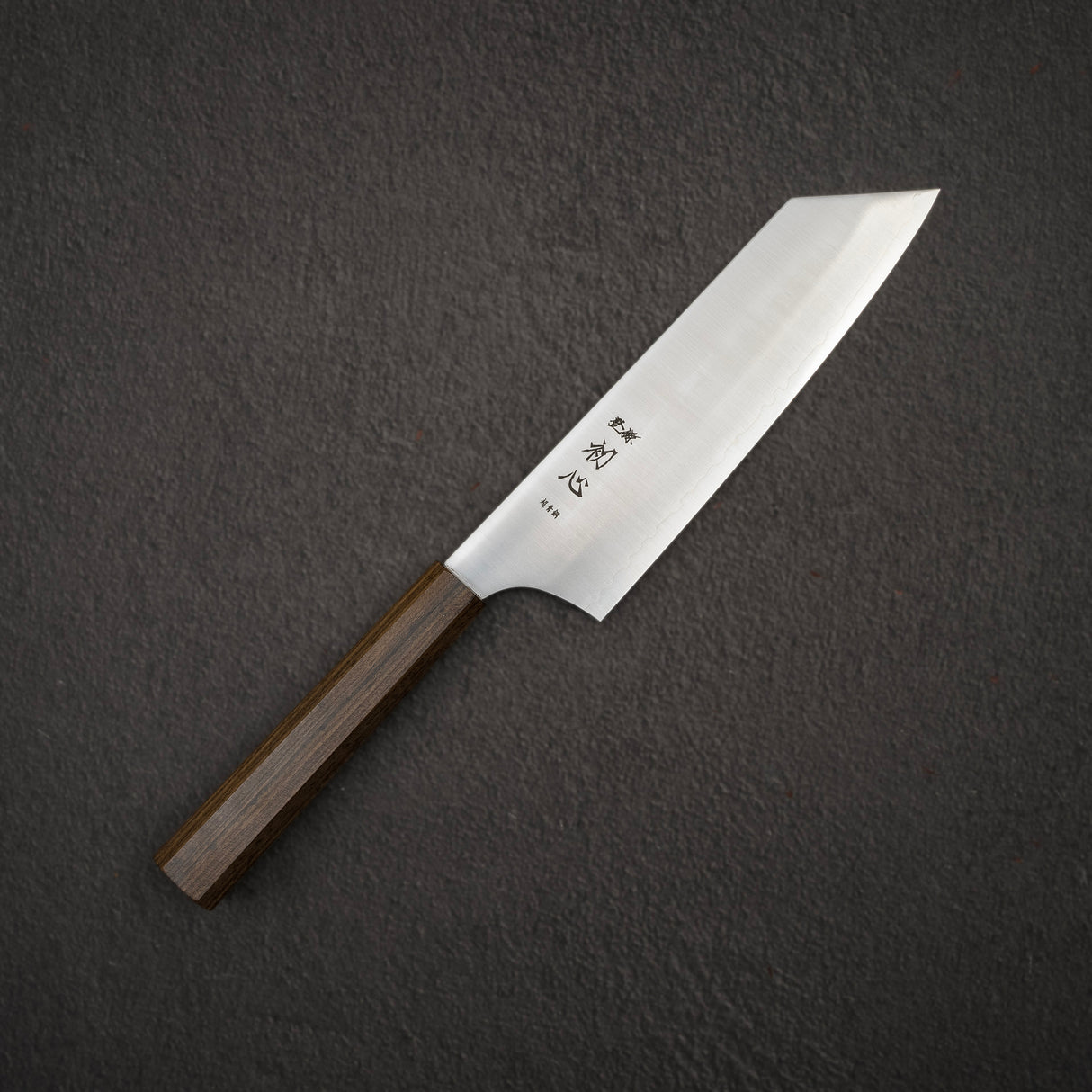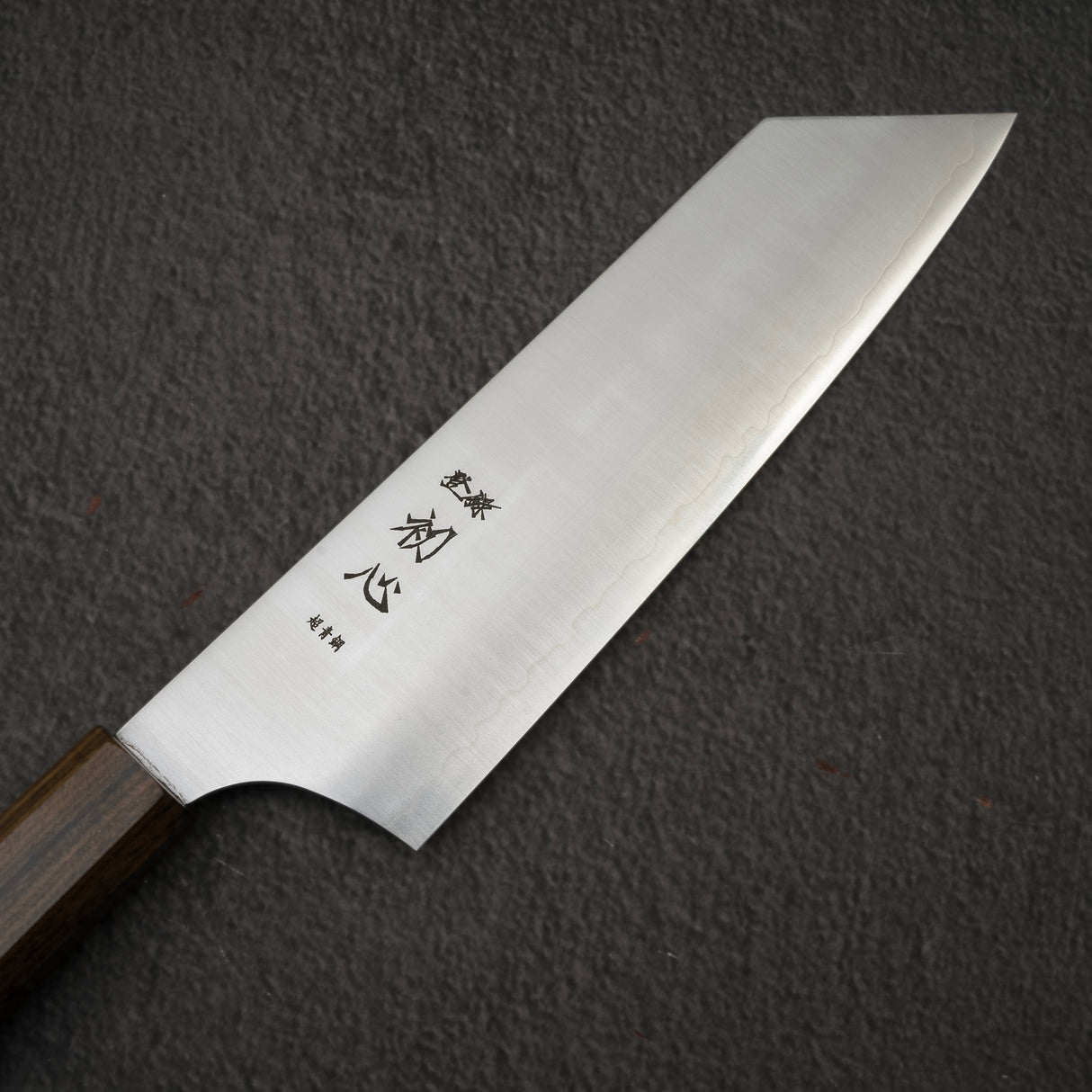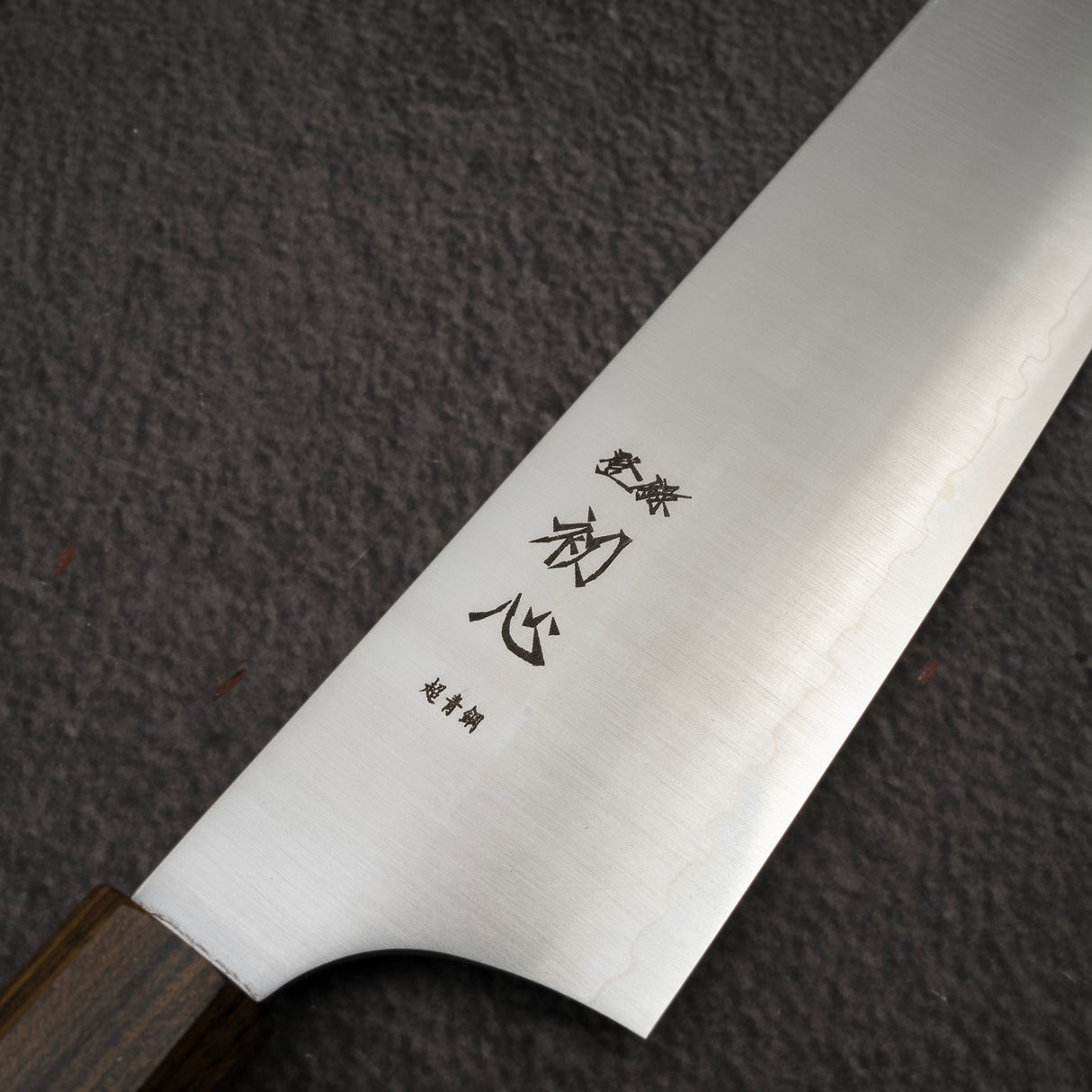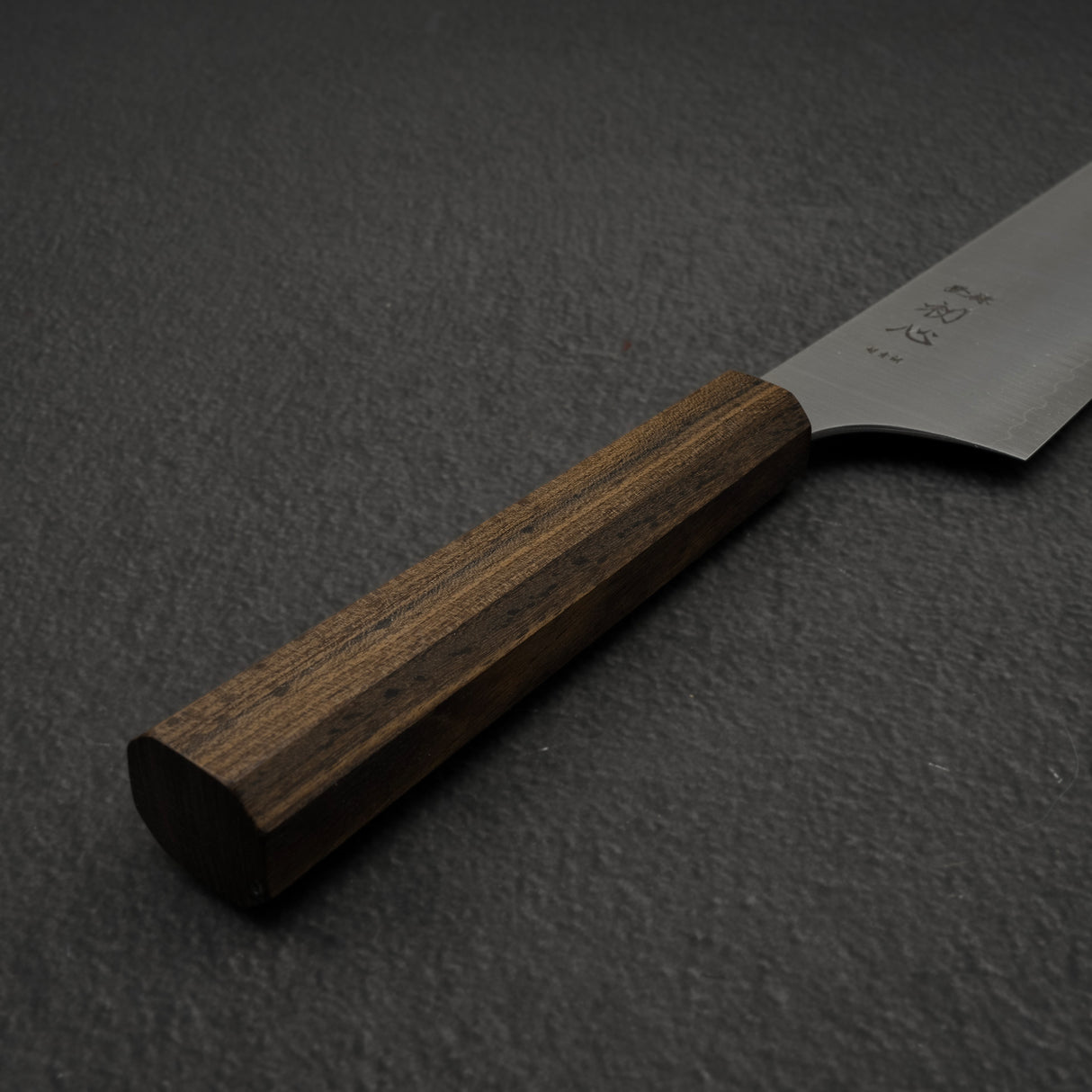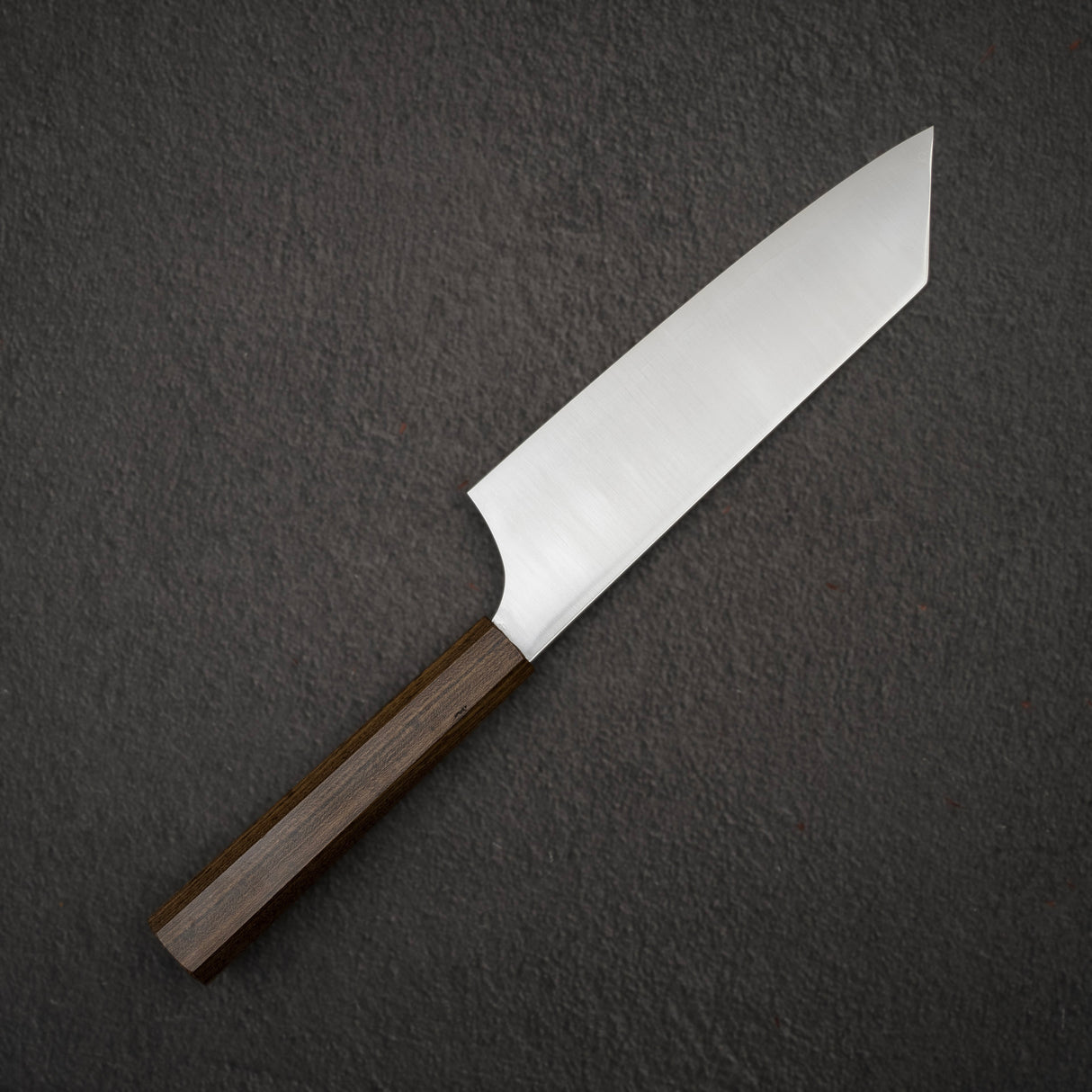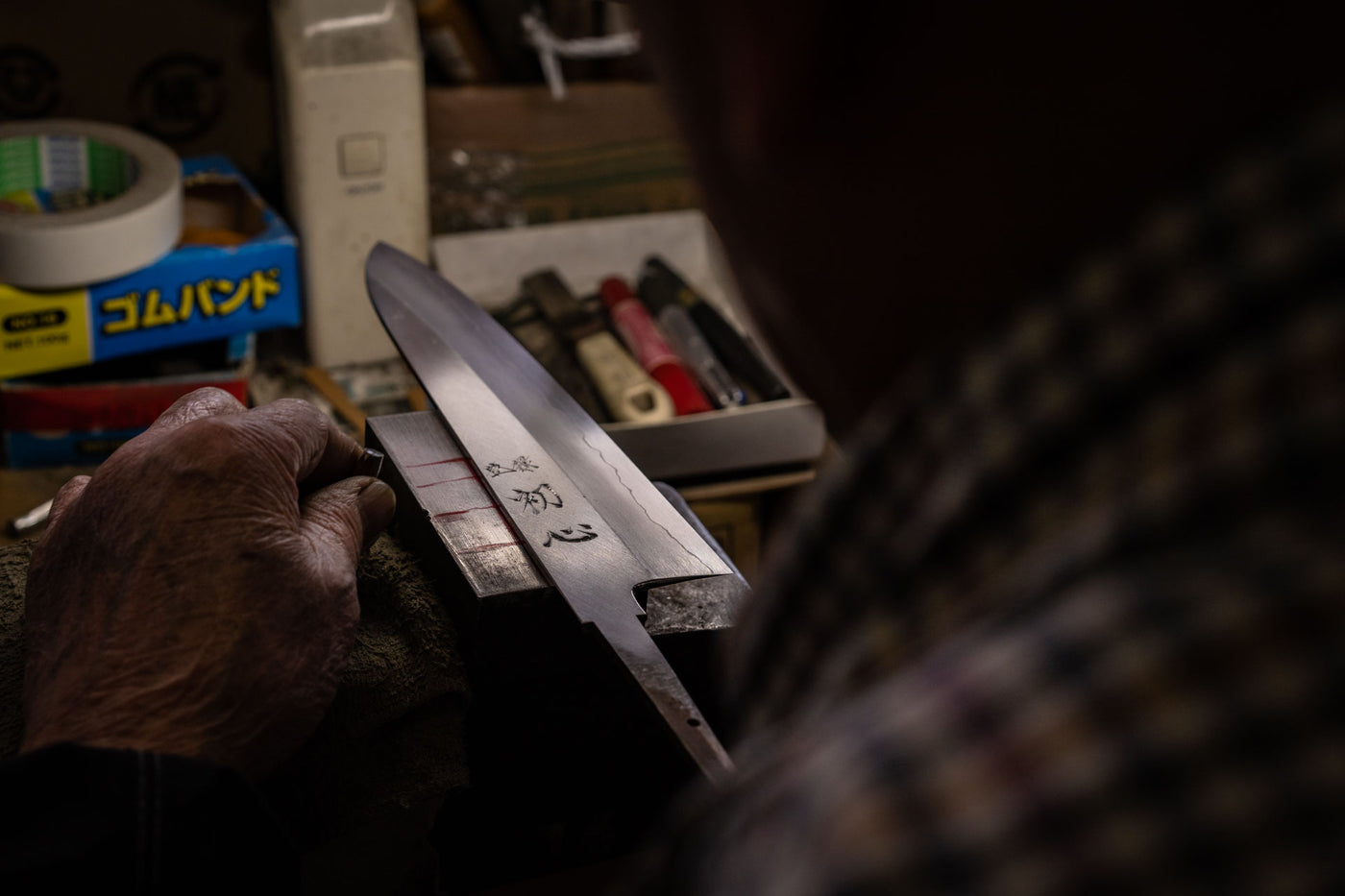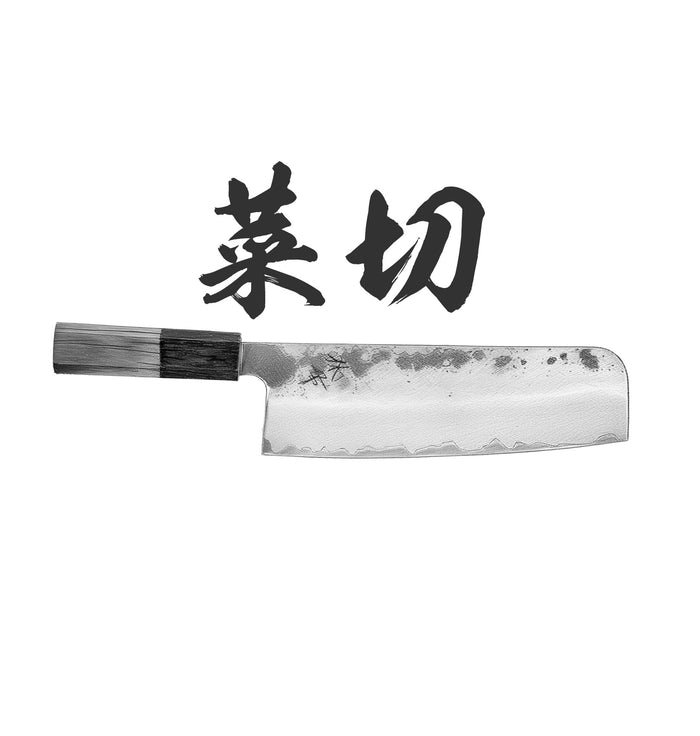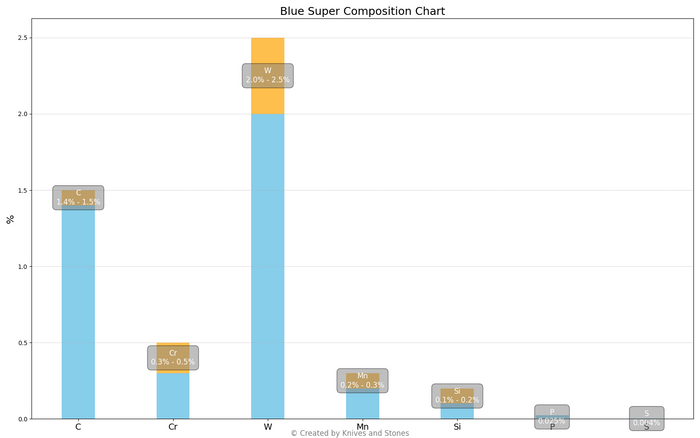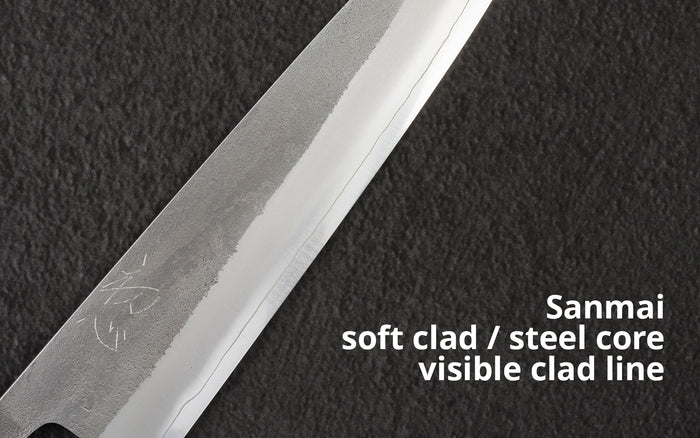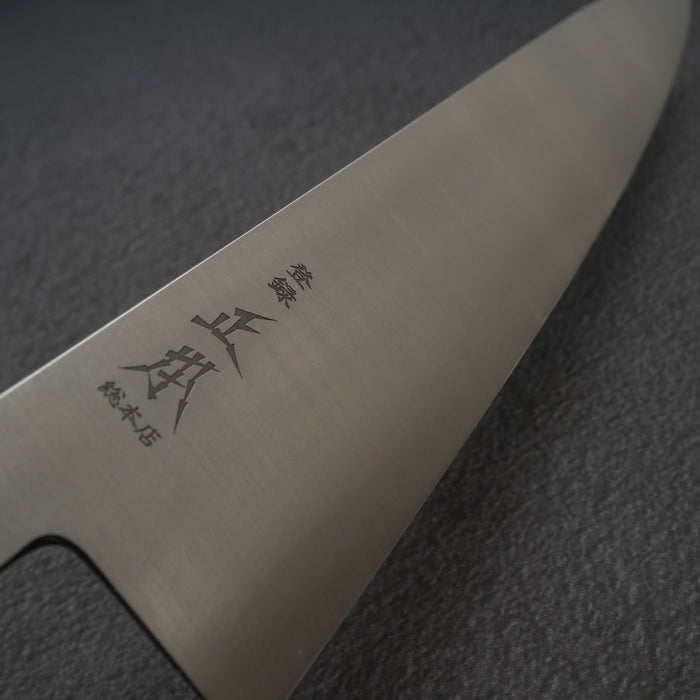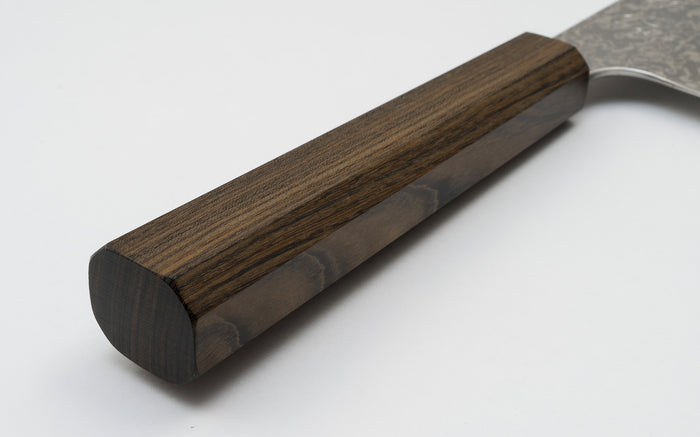Hatsukokoro | SKU:
HT-HBAS-NA180
Hatsukokoro Hayabusa Aogami Super K-tip Nakiri 180mm
$209.95
$229.95
Unit price
/
Unavailable
Hatsukokoro Hayabusa Aogami Super K-tip Nakiri 180mm is backordered and will ship as soon as it is back in stock.
Couldn't load pickup availability
Set currency to AUD to view correct price matching.
K&S Price: AU $209.95* inc. tax , vs:
K&S Price: AU $209.95* inc. tax , vs:
| Store ZA | AU $210.0 | -0.48% |
* For overseas buyers you pay no GST (10%) and low shipping rate.
Last Update: 2025-01-03T01:01:37Z
Detailed Specifications
| Line | Hatsukokoro Hayabusa Aogami Super |
| Profile | Nakiri |
| Bevel Type | Double Bevel |
| Edge Length | 180 mm .7.09 inch |
| Heel Height | 49 mm .1.93 inch |
| Width @ Spine | 2.3 mm 0.09 inch |
| Width @ Mid | 2.2 mm 0.09 inch |
| Width @ 1cm from Tip | 1.1 mm 0.04 inch |
| Steel | Blue Super / Aogami Super | Carbon |
| Blade Construction | Sanmai - Stainless Clad |
| Hardness (HRC) | 62 - 65 |
| Surface Finish | Migaki |
| Handle | Octagonal Black Chacate |
| Region | Hyogo |
| Best for |
|

| Pros | Cons |
|
|
|
Care Instruction
- Don't cut hard things! Japanese knives are brittle so bone hacking is a NO NO!
- Wash with neutral detergent after use, and wipe dry;
- Please don't wash knife with dishwasher, it will damage the wood handle;
- Be careful not to leave the knife close to a heat source for a long time;
- It is a lot more dangerous to cut with a blunt knife than a sharp knife!
- It is best to sharpen a Japanese knife regularly on a waterstone.
- Oil the (carbon) knife if storing for an extended period of time to prevent rust.

